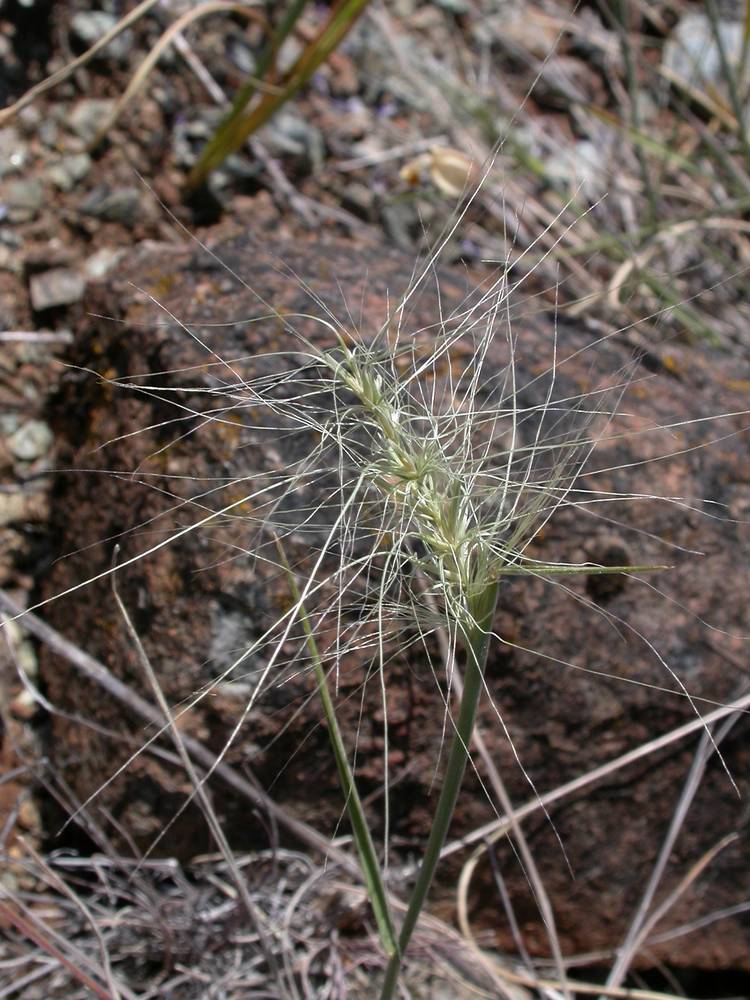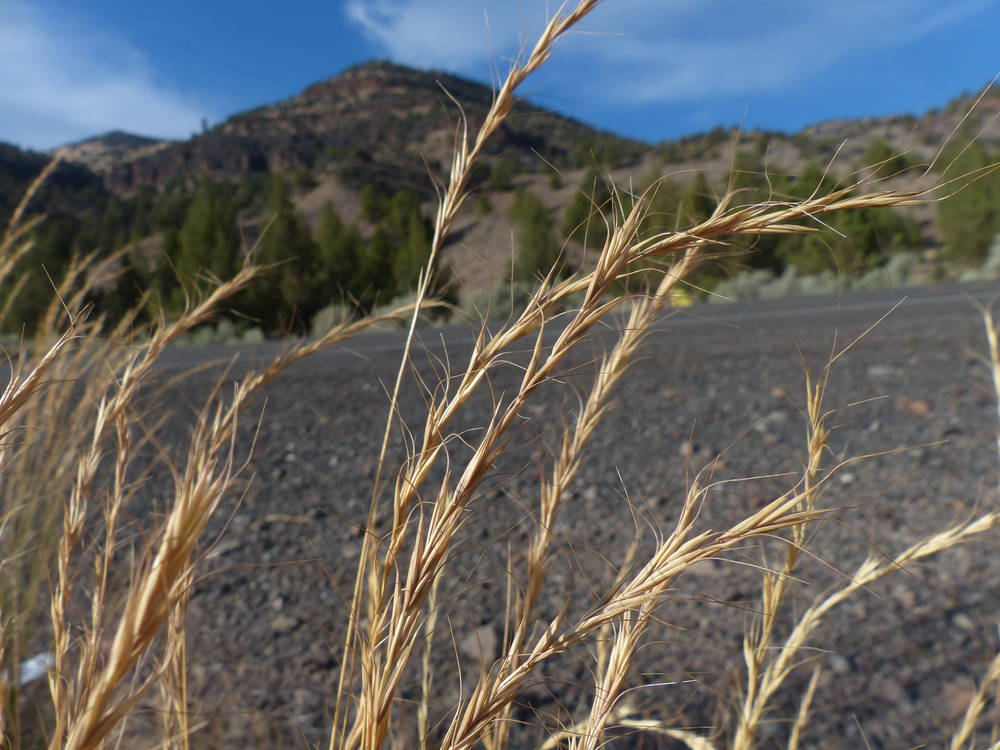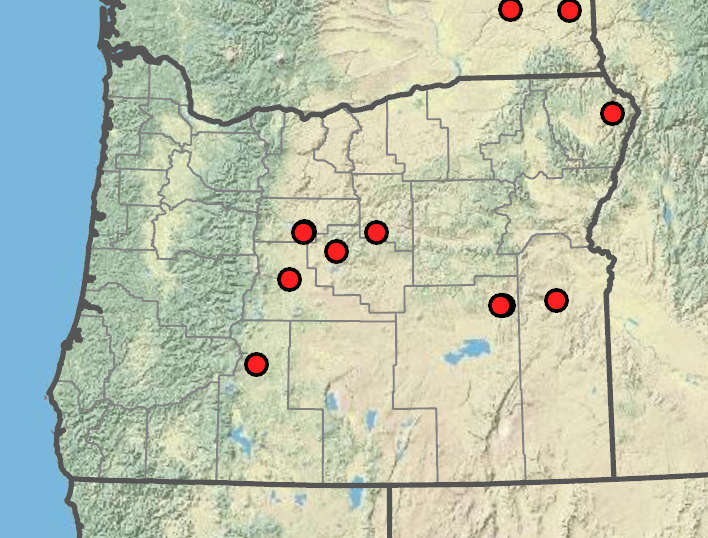Elymus multisetus
Elymus wawawaiensis
big squirreltail
Snake River wheatgrass
erect to ascending.
erect.
sheaths glabrous or white-villous;
blades 1.5–4 mm wide;
upper surfaces scabrous or hairy.
basal sheaths becoming glabrous;
blades to 28 cm × 1.7–5 mm;
inner surfaces densely pubescent or rarely sparsely pubescent.
5–20 cm; erect, sometimes partially enclosed in the sheath of the uppermost leaf, 2 spikelets per node or rarely 3–4 at some nodes;
internodes 3–5(8)mm;
disarticulation initially at the rachis nodes; later beneath each floret.
spikes, 5–20 cm; erect to slightly nodding, 1 spikelet per node;
internodes 5–12 mm;
disarticulation above the glumes; beneath each floret.
10–15 mm, divergent, 2–4 florets; lowest florets sterile and glume-like in 1 or both spikelets at each node.
10–22 mm long; about twice as long as the internodes, 2–8.5 mm wide, appressed, 4–10 florets.
(10)30–100 mm including the awns; the bases hard and glabrous;
glume bodies about (2)5–10 × 1–2 mm, setaceous, 2–3-veined;
margins firm;
glume awns (8)25–90 mm; each split above the base into 3–9 unequal divisions, scabrous, flexuous to outcurving from near the bases at maturity.
4–10 × 0.5–1.3 mm, narrowly lanceolate; widest at or below mid-length, glabrous, often glaucous, 1–3-veined; flat or weakly keeled;
margins 0.1–0.2 mm wide; widest near mid-length;
tips usually acuminate, awned or awnless;
glume awns 0–6 mm.
fertile lemmas 8–10 mm; smooth or scabrous near the tips, 2 lateral veins extending into bristles to 10 mm;
lemma awns (10)20– 110 × 0.2 mm at the base, divergent to arching.
6–12 mm; smooth or slightly scabrous;
margins often sparsely pubescent near the base; longest lemma awns 9–28 mm, strongly divergent.
1–2 mm.
3.5–6 mm.
=28.
Elymus multisetus
Elymus wawawaiensis
Dry, often rocky grasslands and savannas. 50–2000m. BR, Col, ECas, Lava, Sisk, WV. CA, ID, NV, WA; southeast to CO, south to Mexico. Native.
Elymus multisetus has inflorescences that fall apart at maturity and glumes that are divided into three to nine widely spreading awns. Very similar E. elymoides has glumes that are entire or unevenly split into two to three parts. Determining how much the glumes are split is complicated by the presence of glumelike sterile lemmas in both E. multisetus and some E. elymoides subspecies. Elymus multisetus glumes are divided above the base. If the glumes appear to be divided to the base, the plant is more likely to be E. elymoides.
Dry, rocky canyon slopes, disturbed sagebrush steppe, roadsides. 800–1500m. BW, Lava. ID, WA; MT, WY. Native.
Elymus wawawaiensis resembles a vigorous plant of Pseudoroegneria spicata with somewhat more overlapping spikelets. Pseudoroegneria differs in having wider glumes with (3)4–5(7) veins. Elymus wawawaiensis is endemic to the Salmon, Snake, and Yakima river drainages in Oregon, Idaho, and Washington. The “Secar” cultivar of E. wawawaiensis was developed for forage and erosion control and is planted widely in eastern Oregon and elsewhere in the arid West.
Barbara Wilson, Richard Brainerd, Nick Otting
Barbara Wilson, Richard Brainerd, Nick Otting
- Local floras:
CA,
OR,
WA
- Local Web sites:
CalFlora,
CalPhotos,
Flora NW,
PNW Herbaria
WildflowerSearch
iNaturalist (observations)
USDA Plants Database
- LBJ Wildflower Center
- SEINet
- Plants of the World Online
- Encyclopedia of Life
- Wikipedia
- Google Image Search





